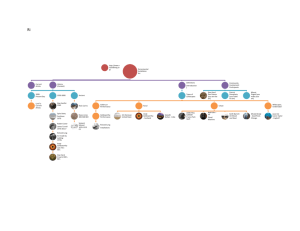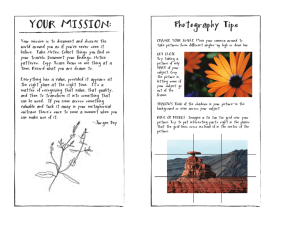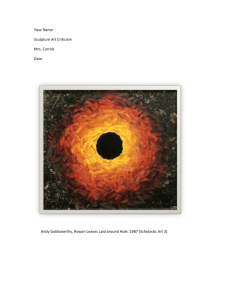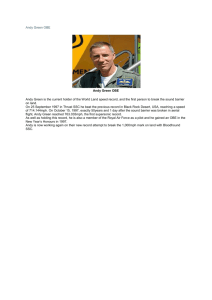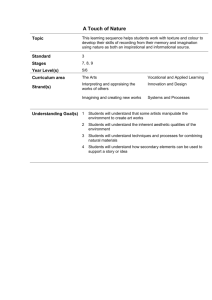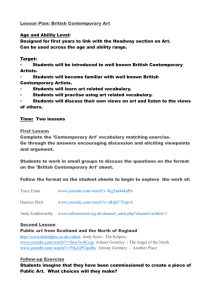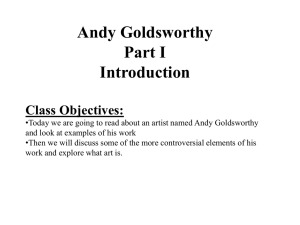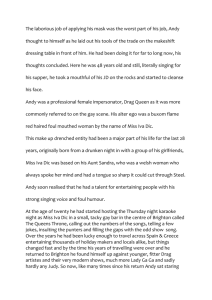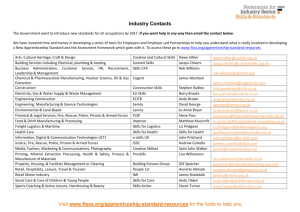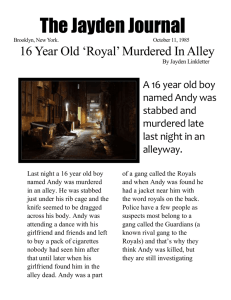Nature Art Lesson Plan: Andy Goldsworthy Inspired (Grade 3)
advertisement
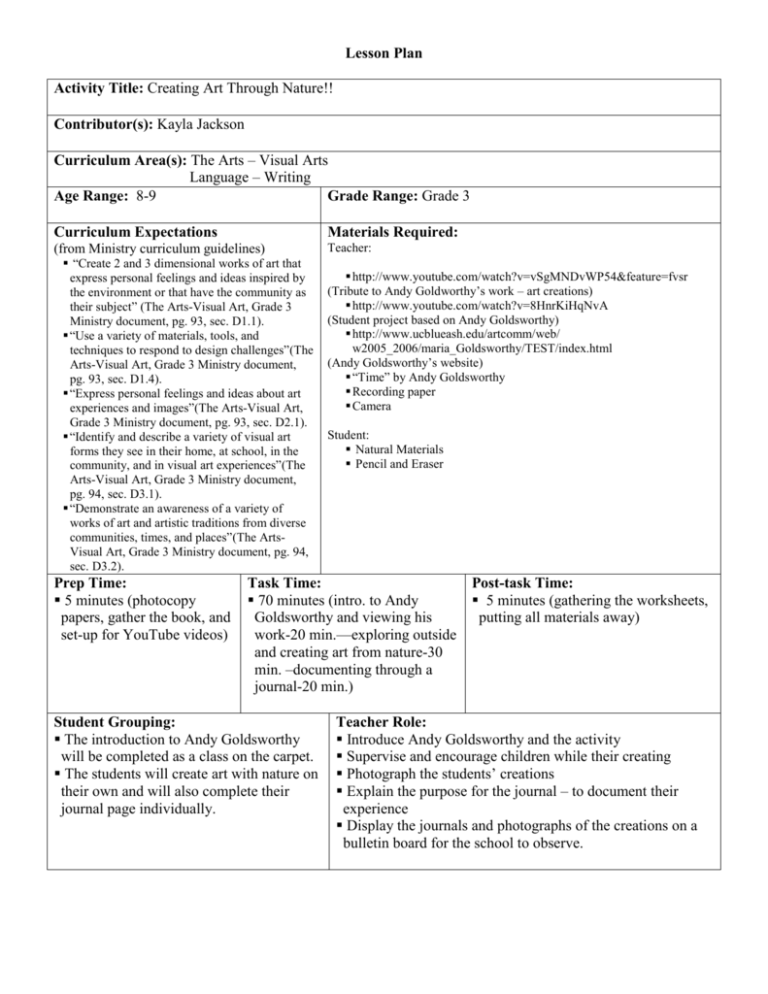
Lesson Plan Activity Title: Creating Art Through Nature!! Contributor(s): Kayla Jackson Curriculum Area(s): The Arts – Visual Arts Language – Writing Age Range: 8-9 Grade Range: Grade 3 Curriculum Expectations Materials Required: (from Ministry curriculum guidelines) Teacher: “Create 2 and 3 dimensional works of art that express personal feelings and ideas inspired by the environment or that have the community as their subject” (The Arts-Visual Art, Grade 3 Ministry document, pg. 93, sec. D1.1). “Use a variety of materials, tools, and techniques to respond to design challenges”(The Arts-Visual Art, Grade 3 Ministry document, pg. 93, sec. D1.4). “Express personal feelings and ideas about art experiences and images”(The Arts-Visual Art, Grade 3 Ministry document, pg. 93, sec. D2.1). “Identify and describe a variety of visual art forms they see in their home, at school, in the community, and in visual art experiences”(The Arts-Visual Art, Grade 3 Ministry document, pg. 94, sec. D3.1). “Demonstrate an awareness of a variety of works of art and artistic traditions from diverse communities, times, and places”(The ArtsVisual Art, Grade 3 Ministry document, pg. 94, sec. D3.2). Prep Time: 5 minutes (photocopy papers, gather the book, and set-up for YouTube videos) http://www.youtube.com/watch?v=vSgMNDvWP54&feature=fvsr (Tribute to Andy Goldworthy’s work – art creations) http://www.youtube.com/watch?v=8HnrKiHqNvA (Student project based on Andy Goldsworthy) http://www.ucblueash.edu/artcomm/web/ w2005_2006/maria_Goldsworthy/TEST/index.html (Andy Goldsworthy’s website) “Time” by Andy Goldsworthy Recording paper Camera Student: Natural Materials Pencil and Eraser Task Time: 70 minutes (intro. to Andy Goldsworthy and viewing his work-20 min.—exploring outside and creating art from nature-30 min. –documenting through a journal-20 min.) Student Grouping: The introduction to Andy Goldsworthy will be completed as a class on the carpet. The students will create art with nature on their own and will also complete their journal page individually. Post-task Time: 5 minutes (gathering the worksheets, putting all materials away) Teacher Role: Introduce Andy Goldsworthy and the activity Supervise and encourage children while their creating Photograph the students’ creations Explain the purpose for the journal – to document their experience Display the journals and photographs of the creations on a bulletin board for the school to observe. Activity Objective (Big Idea): From this activity, students will learn about the British Sculptor, photographer, and environmentalist Andy Goldsworthy while reflecting on his unique ideas. They will then develop art from nature and document the process with a photograph and journal entry. Activity Description: Implementation: Firstly, the teacher will ask thought provoking questions, such as “What is art?” “Can nature be art?” “How does art make you feel?” Then the teacher will introduce students to Andy Goldsworthy, a British artist who transforms nature into art, photographs it, and lets it return to nature. YouTube clips will be shown to demonstrate Andy’s work, as well as a quick tour of the book “Time” to demonstrate what Andy’s work consists of. It will then be explained that they’ll be going outside to create art from only nature – no tools allowed! When done, they’ll photograph their work and write about the art they made and the process they used. The rules about their creation will be explained – they must create it individually and find a space that’s their own to create it. They will be asked to create something interesting that is not a symbol, but instead something with a pattern or symmetrical…Students will need to use a variety of materials and will need to create a piece of art that is larger than their two hands together(at minimum). This challenge will ensure students are challenging themselves to create something interesting that is also a fair size, which utilizes many materials. Students will then be directed outside to create their art; the teacher will photograph their creations to document their artistic creations. When the students are finished creating they’ll be directed back inside and asked to complete the journal page, which includes titling their art piece and answering the questions. Adaptations for: English Language Learners/ESL: LD/Reading & Writing Difficulties: Cultural Appropriateness & Diversity: Children with writing difficulties will have the option to have a scribe who will document what they wish to express. Children can openly express their thoughts and feelings about art while creating their art from nature. Differentiated Instruction: Children who struggle to focus throughout the activity can be paired with another student. Each student will create their own piece of art, but they’ll work cooperatively, creating their pieces of art together. Other Adaptations/ Modifications: Children who finish early will have the opportunity to add something else either to their piece or to the environment it’s in to change it in a different way. Assessment Ideas: Observe children, ask questions to test the children’s comprehension of the activity, and take pictures to document what the children are learning. Reflection: I thought this lesson was a huge hit!! The associate teacher in the class had been studying a variety of famous artists, but when I mentioned Andy Goldsworthy to her, and she had never heard of him, I quickly began explaining his amazing style and also showed her interesting videos and images on the internet. After discussing this artist and showing my associate teacher the amazing possibilities, she quickly expressed her concern with me; she was afraid the children would be disengaged and un-interested with this art, and she was also worried about the amount of available materials. I convinced her to let me give it a try and 5 minutes into the introduction I knew it was going to be a hit!! The students were not only actively engaged for over 25 minutes outside, but as soon as the artist was introduced and one of his many books (“Time”) was introduced, the children were enthralled. As a class we discussed the specifics about Andy Goldsworthy’s art and especially discussed how he titles his pieces and then the students got busy creating their own. As soon as the door opened to the outside, all the children scattered, found their own place to work, and began creating immediately. Everyone was engaged and focused, remaining this way for the duration of the creating period; those students who finished slightly earlier than the rest were challenged to add more materials or to extend it in some way, and this was exciting for them to do. Overall, the students enjoyed it and the associate teacher was impressed that the students responded so well to it. The pictures that were taken of the art work and the process also made for a BEAUTIFUL display board in the school as well that was admired by many! Biography: Andy Goldsworthy works with nature to make sculptures. He is famous for his unique ideas and fascinating earth-forms. He is British and lives in Scotland, and travels all over the world to make art. He has even worked in Alaska. Goldsworthy works outside. When Andy goes outside to create art he explores the area—looking at everything there, playing with the materials, finding out how to deal with the weather, and just being curious. Eventually he develops an idea and often experiments with it before making the art. He has many earth-forms that he often repeats in different places and with different materials, for example: cracks, holes, lines, spirals, etc. He uses materials that he finds in the place he is working, but it isn’t easy. He has to plan. He may work with branches, leaves, moss, grass, dirt, stones, and even water. He often tries things many times before he has success. He takes no tools with him but finds his tools in nature. For example: If he needed a hammer he might use ___________. If he needed to tie something he might use___________. If he needed to glue something he might use___________. If he needed to pin something he might use_________. If he needed to prop something up he might use __________. Not only is Goldsworthy known as a sculptor, but he is also a photographer. The pictures he takes capture the art that he makes before the sun, wind, tide or rain destroys them. He doesn’t use any fancy cameras or filters, although he does compose his photographs to feature the art in the best possible way. Lastly he titles his art in very creative, poetic ways. When you look at the boards and the book, read his interesting titles. They often tell of the weather, problems he encountered or what materials he used. They often explain the process and they always have the date and the place. Art from the Earth: After Andy Goldsworthy Personal Journal page Artist name_________________________ Photo: Title: _____________________________________ _____________________________________ _____________________________________ What was the environment like? (Weather, noises) What did you make? How did you make it?
